Grow Winged Beans
I’ve always loved the unique look of winged beans – those gorgeous, intricately patterned pods climbing happily up a trellis. But for years, I thought growing them was some kind of magical feat reserved for expert gardeners. Turns out, I was wrong! This article is all about demystifying the process and sharing my favorite Grow Winged Beans tricks and DIY solutions to help you cultivate these beautiful and nutritious plants in your own backyard. Forget expensive seeds and complicated instructions; we’re diving into simple, effective methods that even a beginner can master.
Winged beans, also known as Psophocarpus tetragonolobus, boast a rich history, cultivated for centuries in Southeast Asia as a vital source of protein and nutrients. They’re not just a pretty face; every part of the plant – from the pods to the leaves and even the roots – is edible! This makes them a fantastic addition to any home garden, offering a sustainable and delicious harvest.
Why You Need These Grow Winged Beans Hacks
In today’s world, where access to fresh, healthy produce can be a challenge, growing your own food is more important than ever. Learning how to grow winged beans successfully empowers you to control the quality and origin of your food, reducing your reliance on potentially less sustainable sources. Plus, there’s an undeniable satisfaction in nurturing a plant from seed to harvest, and the vibrant colors and unique flavors of winged beans make the effort truly worthwhile. These DIY tips and tricks will help you avoid common pitfalls and maximize your yield, ensuring a bountiful harvest of these incredible legumes.
So, grab your gardening gloves and let’s get started on your journey to growing these amazing beans! I’ll share my personal experiences, along with practical advice and easy-to-follow instructions, to help you achieve a thriving winged bean patch in your own garden.
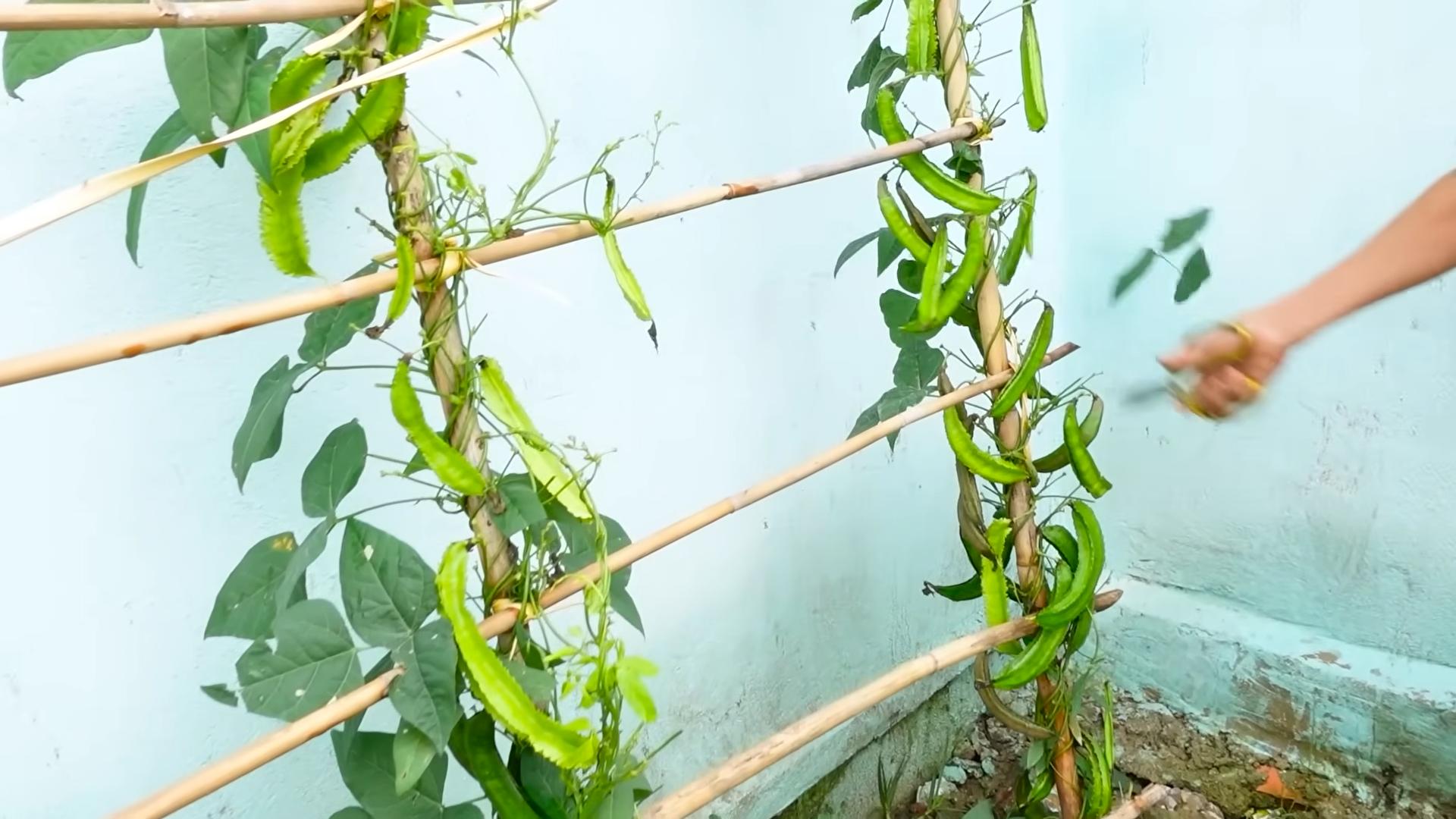
Growing Winged Beans: A Comprehensive DIY Guide
Winged beans are a fascinating and rewarding crop to grow, offering both beautiful flowers and nutritious pods. This guide will walk you through the entire process, from seed to harvest.
Phase 1: Planning and Preparation
- Choose your location: Winged beans need plenty of sunshine – at least six hours a day. Select a sunny spot in your garden with well-drained soil. They also prefer warmer temperatures, so consider your local climate.
- Prepare the soil: Winged beans thrive in fertile, well-drained soil. Amend heavy clay soils with compost or other organic matter to improve drainage and aeration. Test your soil’s pH; a slightly acidic to neutral pH (6.0-7.0) is ideal. If your soil is too acidic, add lime; if it’s too alkaline, add sulfur, following package instructions carefully.
- Gather your supplies: You’ll need winged bean seeds (available online or at garden centers), gardening gloves, a trowel or small shovel, a watering can, and possibly some fertilizer (more on this later).
- Decide on your planting method: You can direct sow winged bean seeds or start them indoors in seed trays. Direct sowing is generally easier, but starting indoors gives you a head start in cooler climates.
Phase 2: Sowing the Seeds
- Direct sowing (recommended): Prepare the soil by loosening it to a depth of about 12 inches. Make small holes, about 1 inch deep and 2-3 inches apart, spacing rows about 2-3 feet apart. Place 2-3 seeds in each hole. Cover the seeds with soil and gently firm the ground.
- Starting indoors (optional): Fill seed trays with seed-starting mix. Plant 2-3 seeds per cell, about 1 inch deep. Keep the soil moist and warm (around 70-75°F). Once seedlings have a few true leaves (after the first set of leaves), transplant them outdoors after the last frost, maintaining the spacing mentioned above.
- Watering: After sowing, water the seeds gently but thoroughly. Avoid overwatering, which can lead to root rot. Maintain consistent moisture throughout the growing season, especially during dry spells.
Phase 3: Growth and Care
- Thinning: Once seedlings emerge, thin them to one strong plant per hole. Carefully remove the weaker seedlings, leaving the strongest one to grow. This ensures adequate space and resources for each plant.
- Fertilizing: Winged beans are relatively low-maintenance, but a balanced fertilizer can boost their growth and yield. Apply a slow-release fertilizer at planting time, following package instructions. You can also side-dress with compost tea or other organic fertilizers throughout the growing season.
- Watering: Consistent watering is crucial, especially during dry periods. Aim for about 1 inch of water per week, either through rainfall or supplemental irrigation. Water deeply and less frequently rather than shallowly and often to encourage deep root growth.
- Pest and disease control: Winged beans are generally resistant to pests and diseases. However, keep an eye out for common garden pests like aphids or bean beetles. If you notice any infestations, consider using organic pest control methods such as insecticidal soap or neem oil. Good air circulation can also help prevent fungal diseases.
- Support structures: Winged beans are vigorous climbers. Provide support structures such as trellises, stakes, or fences for the plants to climb on. This will prevent the plants from sprawling on the ground, improving air circulation and making harvesting easier.
- Weed control: Regularly weed around the plants to prevent competition for nutrients and water. Mulching can help suppress weeds and retain soil moisture.
Phase 4: Harvesting
- Harvesting the pods: Winged bean pods are ready for harvest when they are young and tender, typically 4-6 weeks after flowering. The pods should be firm but not woody. Harvest regularly to encourage continued production.
- Harvesting the seeds: Allow some pods to mature fully on the plant for seed saving. The pods will turn brown and dry. Once dry, collect the seeds and store them in a cool, dry place for planting the following season.
- Cleaning and storing: Wash the harvested pods thoroughly. You can eat them fresh, or you can blanch them and freeze them for later use. Store the seeds in airtight containers in a cool, dry, and dark place.
Phase 5: Troubleshooting
- Yellowing leaves: This could indicate nutrient deficiencies, overwatering, or pest problems. Check your soil’s nutrient levels, adjust your watering schedule, and inspect for pests.
- Poor flowering: Insufficient sunlight, lack of nutrients, or extreme temperatures can affect flowering. Ensure your plants receive adequate sunlight, fertilize appropriately, and protect them from extreme weather conditions.
- Few or no pods: This could be due to poor pollination, lack of nutrients, or pest damage. Ensure good air circulation to attract pollinators, fertilize regularly, and control pests.
Remember: Patience and observation are key to successful winged bean cultivation. Enjoy the process and the delicious harvest!
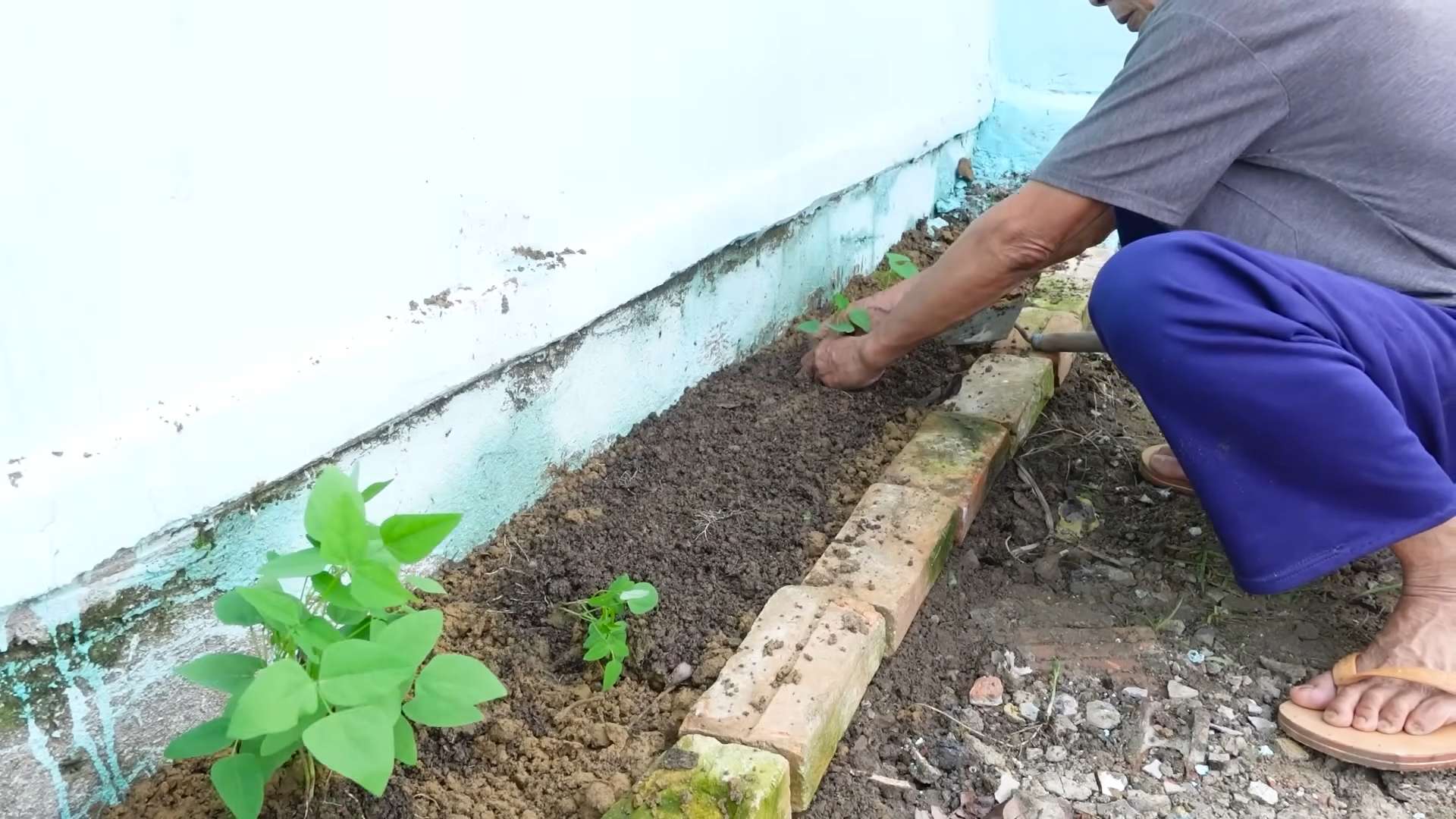
Conclusion
So there you have it – a comprehensive guide to growing winged beans, a truly rewarding experience for home gardeners. This DIY approach to cultivating these nutritious and versatile legumes offers a unique opportunity to connect with nature and enjoy the fruits (or rather, the beans!) of your labor. Growing winged beans from seed is surprisingly simple, even for beginners, and the resulting harvest is incredibly satisfying. The vibrant green vines, the unusual bean pods, and the delicious, slightly nutty flavor of the beans themselves make this a truly special addition to any garden. Beyond the culinary delights, growing winged beans contributes to a more sustainable lifestyle, reducing your reliance on commercially produced food and fostering a deeper appreciation for the natural world.
The ease of germination, the relatively low maintenance requirements, and the bountiful harvest make this a must-try for anyone interested in expanding their gardening repertoire. Whether you’re a seasoned gardener or just starting out, the satisfaction of nurturing these plants from seed to harvest is unparalleled. This method allows you to control the quality of your beans, ensuring they are free from pesticides and other harmful chemicals. You’ll be amazed at the sheer volume of beans you can produce from a relatively small space, making it an ideal choice for even the smallest urban gardens or balconies.
We encourage you to experiment with different varieties of winged beans to discover your favorites. Some varieties boast larger pods, while others offer a more intense flavor. Consider companion planting with other nitrogen-fixing plants to further enhance the soil fertility and overall health of your winged bean plants. You can also explore different methods of supporting the vines, such as using trellises, stakes, or even letting them climb naturally on fences or other structures. The possibilities are endless, and the learning process is part of the fun!
Don’t be afraid to try different approaches and adapt the techniques to suit your specific environment and preferences. The key is to observe your plants, understand their needs, and respond accordingly. Remember, even experienced gardeners encounter challenges, and learning from mistakes is all part of the journey. Growing winged beans is a journey of discovery, a testament to the power of nature, and a delicious reward for your efforts.
We wholeheartedly encourage you to embark on this rewarding gardening adventure. Share your experiences, your successes, and even your challenges with us and other fellow gardeners. Let’s build a community of winged bean enthusiasts, sharing tips, tricks, and recipes to celebrate this incredible legume. Post pictures of your thriving plants and delicious dishes on social media using #GrowWingedBeans and tag us – we can’t wait to see what you create!
Frequently Asked Questions
Q: How long does it take for winged beans to mature?
The time it takes for winged beans to mature depends on the variety and growing conditions, but generally, you can expect to harvest your first beans within 60-90 days of planting. Some varieties may take a little longer, while others might be ready sooner. Consistent watering and adequate sunlight are key factors influencing the growth rate.
Q: What type of soil is best for growing winged beans?
Winged beans thrive in well-drained, fertile soil with a slightly acidic to neutral pH (6.0-7.0). Amend heavy clay soils with organic matter like compost to improve drainage and aeration. Sandy soils may benefit from the addition of organic matter to retain moisture. A soil test can help determine the precise nutrient levels and pH of your soil, allowing you to make necessary adjustments.
Q: How often should I water my winged bean plants?
Consistent watering is crucial, especially during the initial stages of growth and during dry spells. Aim to keep the soil consistently moist but not waterlogged. Overwatering can lead to root rot, while underwatering can stunt growth. The frequency of watering will depend on factors such as climate, soil type, and the amount of rainfall. Observe the soil moisture levels and adjust your watering schedule accordingly. Mulching around the plants can help retain soil moisture and reduce the frequency of watering.
Q: What are some common pests and diseases that affect winged beans?
Winged beans are relatively pest-resistant, but they can be susceptible to certain pests and diseases. Common pests include aphids, bean beetles, and whiteflies. Diseases such as root rot, leaf blight, and anthracnose can also affect the plants. Regular monitoring for pests and diseases is essential. Implementing preventative measures such as crop rotation, proper spacing, and maintaining good hygiene can help minimize the risk of infestations and diseases. Organic pest control methods can be used to address any issues that arise.
Q: Can I grow winged beans in containers?
Yes, you can definitely grow winged beans in containers, making them suitable for balcony gardens or limited spaces. Choose large containers (at least 12 inches in diameter) with adequate drainage holes. Use a well-draining potting mix and ensure the containers receive ample sunlight. You may need to provide additional support for the vines as they grow, such as using stakes or trellises.
Q: What are the best ways to preserve the harvested winged beans?
Fresh winged beans are best enjoyed immediately, but you can also preserve them for later use. Freezing is a great option – simply blanch the beans for a few minutes, then cool them quickly in ice water before packaging and freezing. You can also dry the beans for long-term storage. String the beans together and hang them in a well-ventilated area until completely dry. Properly stored, dried winged beans can last for several months.

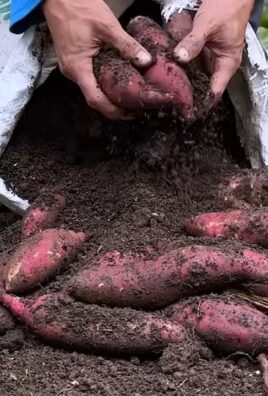
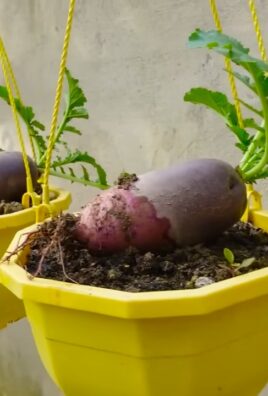
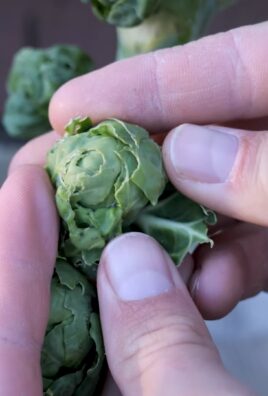
Leave a Comment